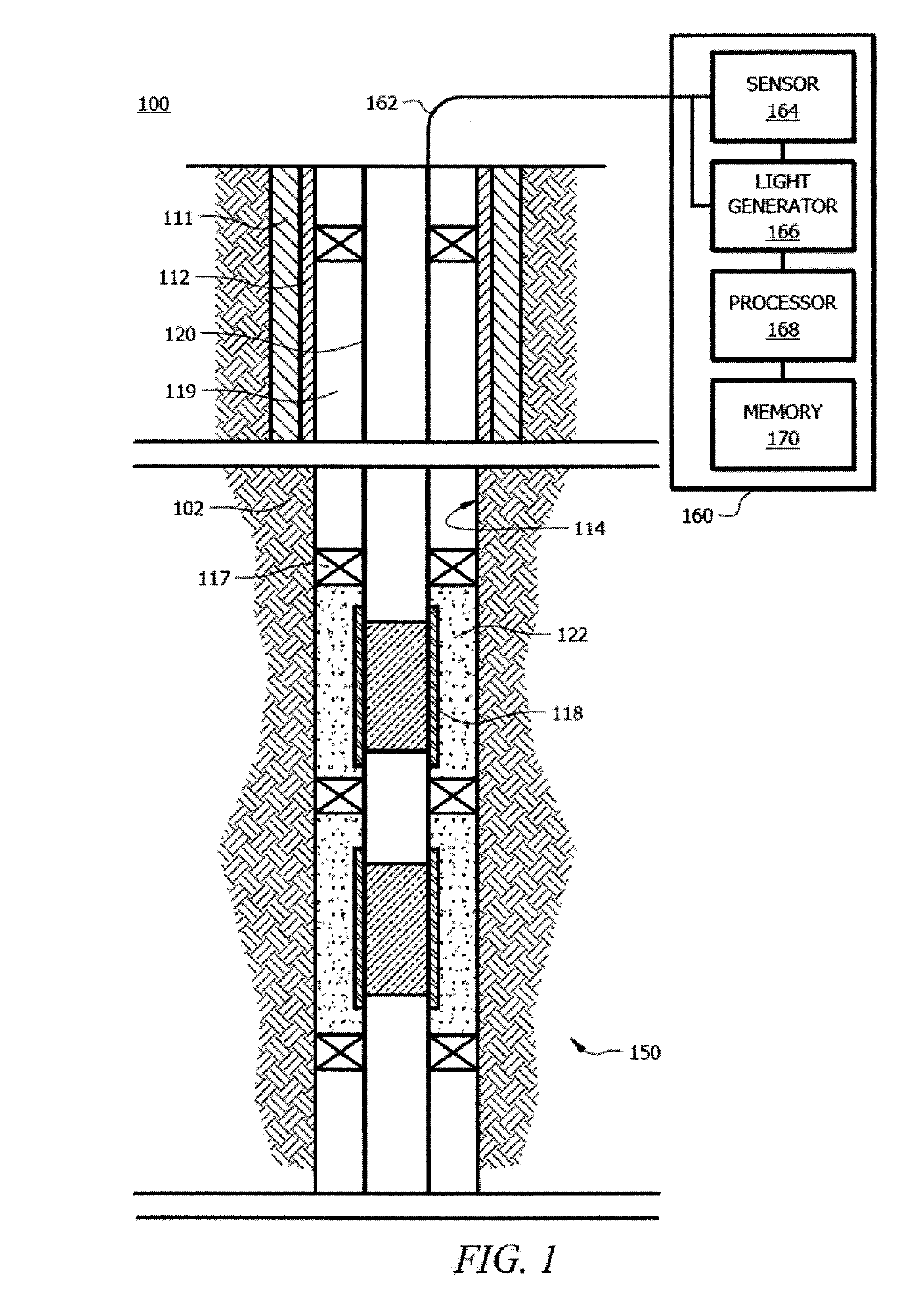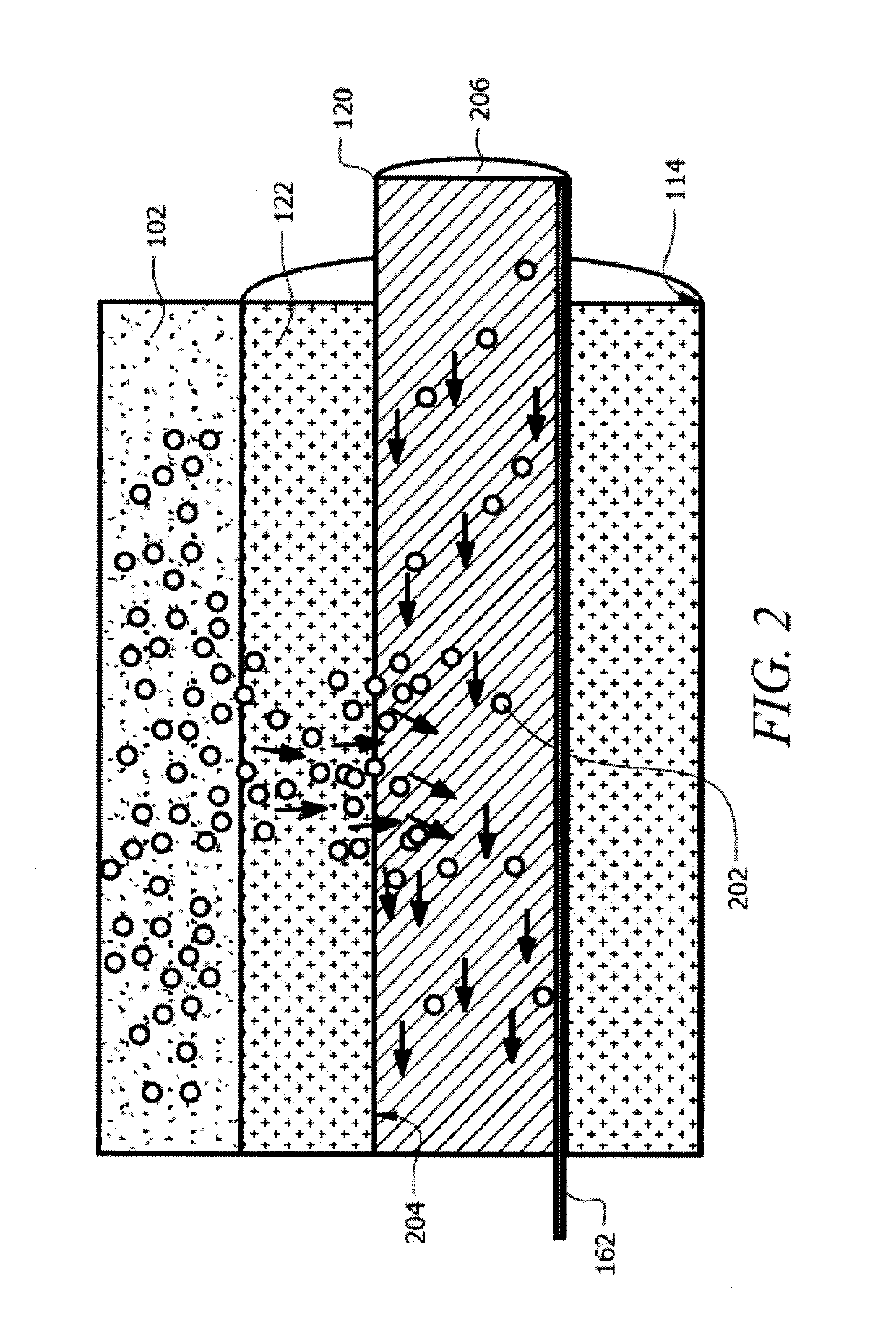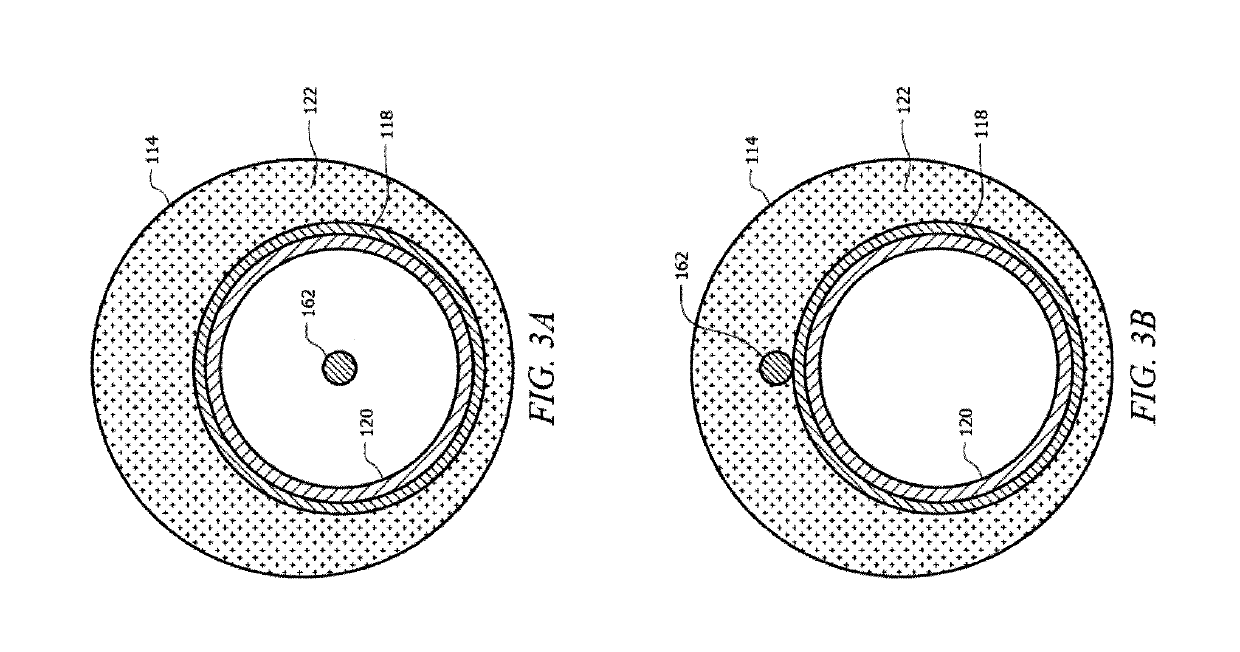Detecting Downhole Events Using Acoustic Frequency Domain Features
a technology of acoustic frequency domain and event detection, which is applied in the direction of instruments, borehole/well accessories, surveys, etc., can solve the problems of reducing oil production, clogging of wells, contamination and damage of surface equipment,
- Summary
- Abstract
- Description
- Claims
- Application Information
AI Technical Summary
Benefits of technology
Problems solved by technology
Method used
Image
Examples
first embodiment
[0169]In a first embodiment, a method of detecting sand inflow into a wellbore comprises: obtaining a sample data set, the sample data set being a sample of an acoustic signal originating within a wellbore comprising a fluid, detecting a broadband signal within the sample data set, wherein the broadband signal comprises frequencies greater than about 0.5 kHz, comparing the broadband signal with a signal reference, determining that the broadband signal meets or exceeds the signal reference, and determining the presence of sand inflow into the wellbore based on determining that the broadband signal meets or exceeds the signal reference.
[0170]The broadband acoustic signal can include frequencies in the range of about 5 Hz to about 10 kHz, frequencies in the range of about 5 Hz to about 5 kHz or about 50 Hz to about 5 kHz, or frequencies in the range of about 500 Hz to about 5 kHz. Any frequency ranges between the lower frequencies values (e.g., 5 Hz, 50 Hz, 500 Hz, etc.) and the upper ...
fifth embodiment
[0195]In a twenty fifth embodiment, a method of detecting sand inflow into a wellbore comprises: filtering an acoustic data set using a spatial filter to obtain a first data sample in the time domain, wherein the acoustic data is obtained from the wellbore, and wherein the first data sample is indicative of an acoustic sample over a defined depth in the wellbore; transforming the first data sample to a frequency domain to produce a second data sample; determining a spectral centroid of the second data sample; determining a spectral spread of the second data sample; determining that the spectral centroid is greater than a spectral centroid threshold; determining that the spectral spread is greater than a spectral spread threshold; and determining the presence of sand entering the wellbore at the defined depth based on determining that the spectral centroid is greater than a spectral centroid threshold and determining that the spectral spread is greater than a spectral spread threshol...
second embodiment
[0202]A thirty second embodiment can include any of the above mentioned method embodiments, further comprising: obtaining the acoustic data set or acoustic signal from the wellbore during production of a fluid.
[0203]A thirty third embodiment can include the method of any of the twenty fifth to thirty second embodiments, wherein the spatial filter includes a distance between about 1 meter and about 20 meters.
[0204]A thirty fourth embodiment can include the method of any of the tenth or twenty fifth to thirty third embodiments, further comprising: performing a workover at the defined depth based on the determination of the presence of sand entering the wellbore at the defined depth.
[0205]A thirty fifth embodiment can include the method of the thirty fourth embodiment, wherein the workover comprises a consolidation procedure.
PUM
 Login to View More
Login to View More Abstract
Description
Claims
Application Information
 Login to View More
Login to View More - R&D
- Intellectual Property
- Life Sciences
- Materials
- Tech Scout
- Unparalleled Data Quality
- Higher Quality Content
- 60% Fewer Hallucinations
Browse by: Latest US Patents, China's latest patents, Technical Efficacy Thesaurus, Application Domain, Technology Topic, Popular Technical Reports.
© 2025 PatSnap. All rights reserved.Legal|Privacy policy|Modern Slavery Act Transparency Statement|Sitemap|About US| Contact US: help@patsnap.com



